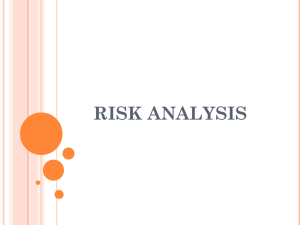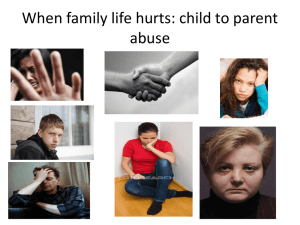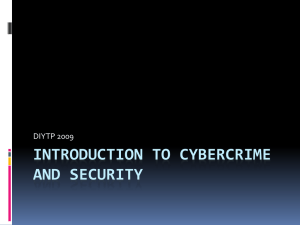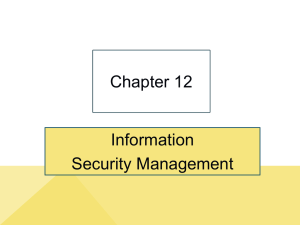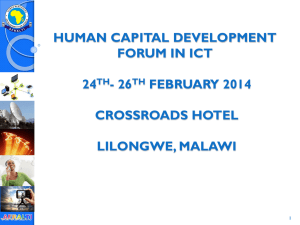Session 2d Raquel Duarte Davidson5 MB
advertisement
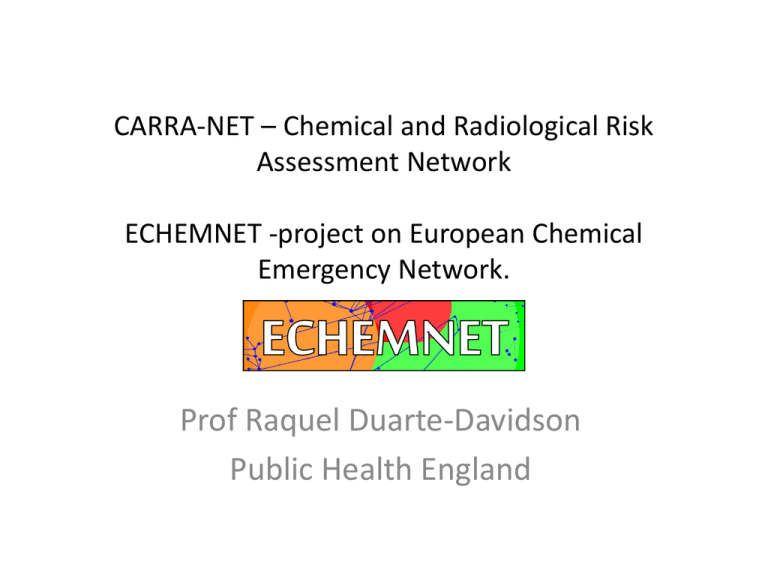
CARRA-NET – Chemical and Radiological Risk Assessment Network ECHEMNET -project on European Chemical Emergency Network. Prof Raquel Duarte-Davidson Public Health England CARRA-Net CARIMEC Overarching objectives • To improve hazard identification, risk assessment, risk mitigation and risk communication of emerging cross border chemical public health threats. • To support the implementation of EU Decision 1082/2013/EU & International Health Regulations. Acknowledgements • European Chemical Emergency Network (ECHEMNET) Group Rob Orford, Charlotte Hague, Mark Griffiths, Herbert Desel, Andreas Schaper, Lisbeth Hall, Sally Hoffer, Marjolein Groot, Cisca Stom, Ann Goransson Nyberg, Per Leffler, Elisabeth Wigenstam, Agneta Plamboeck, Jiri Trnka, María del Carmen García Cazalilla, Manuel González Guzmán, Jesus Ocaña García-Donas, Jose Javier García del Aguila, Raquel Duarte-Davidson CARRANET Framework Service Contract No 2009 61 05 – Lot 2 2010 – Pre-draft Decision 1082/2013/EU • Facilitate mutual sharing of information on the impact on public health caused by chemical (and radionuclear) acute events • Build on existing expertise to provide rapid and appropriate evidence-based assessments to National Authorities responsible for protecting the health of citizens following cross border incidents • Consolidate risk assessment networks for chemicals and radioactive threats and risks • Create a database of MS correspondents to implement threat assessment activities following such events CARRANET Framework Service Contract No 2009 61 05 – Lot 2 2010 – Pre-draft Decision 1082/2013/EU • Develop Standard Operational Procedures (SOPs), protocols, criteria and guidelines to: trigger the threat assessment in case of an incident share information within the appropriate Public Health Authority Network trigger the risk management process by activating the appropriate authorities ECHEMNET 2013-2016 [20121101] • Consolidate existing guidance documents and procedures for coordinated risk assessment and management of cross-border incidents • Engage with end-users and stakeholders to ensure the guidance documents and network are robust and fit-for-purpose. • Further develop a sustainable network of public health risk assessors to respond to emerging crossborder incidents. • Produce and test worked examples of potential chemical threats via the network of assessors 1082/2013/EU Article 10: Public health risk assessment 1. Where an alert is notified pursuant to Article 9, the Commission shall, where necessary for the coordination of the response at Union level and upon request of the make promptly available to the national competent authorities and to the HSC, through the EWRS, a risk assessment of the potential severity of the threat to public health, including possible public health measures. That risk HSC referred to in Article 17 or on its own initiative, assessment shall be carried out by: ECDC, EFSA etc… 2. Where the risk assessment needed is totally or partially outside the mandates of the agencies referred to in paragraph 1, and it is considered necessary for the coordination of the response at Union level, the Commission shall, upon request of the HSC or its own initiative, provide an ad hoc risk assessment. Rapid Risk Assessment of emerging chemical threats 1. 2. 3. 4. Releases to air or land from industrial or natural incidents Releases to water courses and water supplies Contamination of food and drink Contamination of consumer goods Rapid Risk Assessment of emerging chemical threats • Tested in CELESTE Quicksilver exercises Rapid Risk Assessment of emerging chemical threats • Reiterate based on feedback from Quicksilver, SANCO, ECDC, WHO, EFSA. • Test in ECHEMNET 2015 exercises. EU Scientific Committees Statement by the Commission • Where a risk assessment concerning a serious cross border threat to health falls outside the mandates of the agencies of the Union, the Commission undertakes obtaining such a risk assessment by means of expert groups. • The Commission will, as a priority, have recourse to the Scientific Committees established by Commission Decision 2008/721/EC of 5 August 2008 setting up an advisory structure of Scientific Committees and experts in the field of consumer safety, public health and the environment and repealing Decision 2004/210/EC. 2011/0421 (COD) Expert groups: The ECHEMNET • Merging of expert groups from existing expert groups to support the SCHER Committees: – CERACI – MASH – ASHT – CARRANET • Defining what is an expert for cross border chemical health threats. • Recruiting experts to the network. Skills Framework Is this you??? Contact: ECHEMNET@phe.gov.uk Supporting guidance • Guidance for – National Risk Assessors • When should an event be notified? • What types of events should be notified? • Who should I notify? – Operating RASCHEM – Nominating RASCHEM users Supporting guidance Future….. There is a need to find a mechanism for: I. Full roll-out and training on RASCHEM II. Training and support for assessing risks at national level from emerging chemical threats III. Maintenance of Event & Indicator Based Surveillance and RASCHEM moderation IV.Development of resources for EU MSs and EC V. Development and maintenance of codes and terms that are used to record exposures VI.Development of enhanced cross-sectoral operation and exchange for chemical health threats



